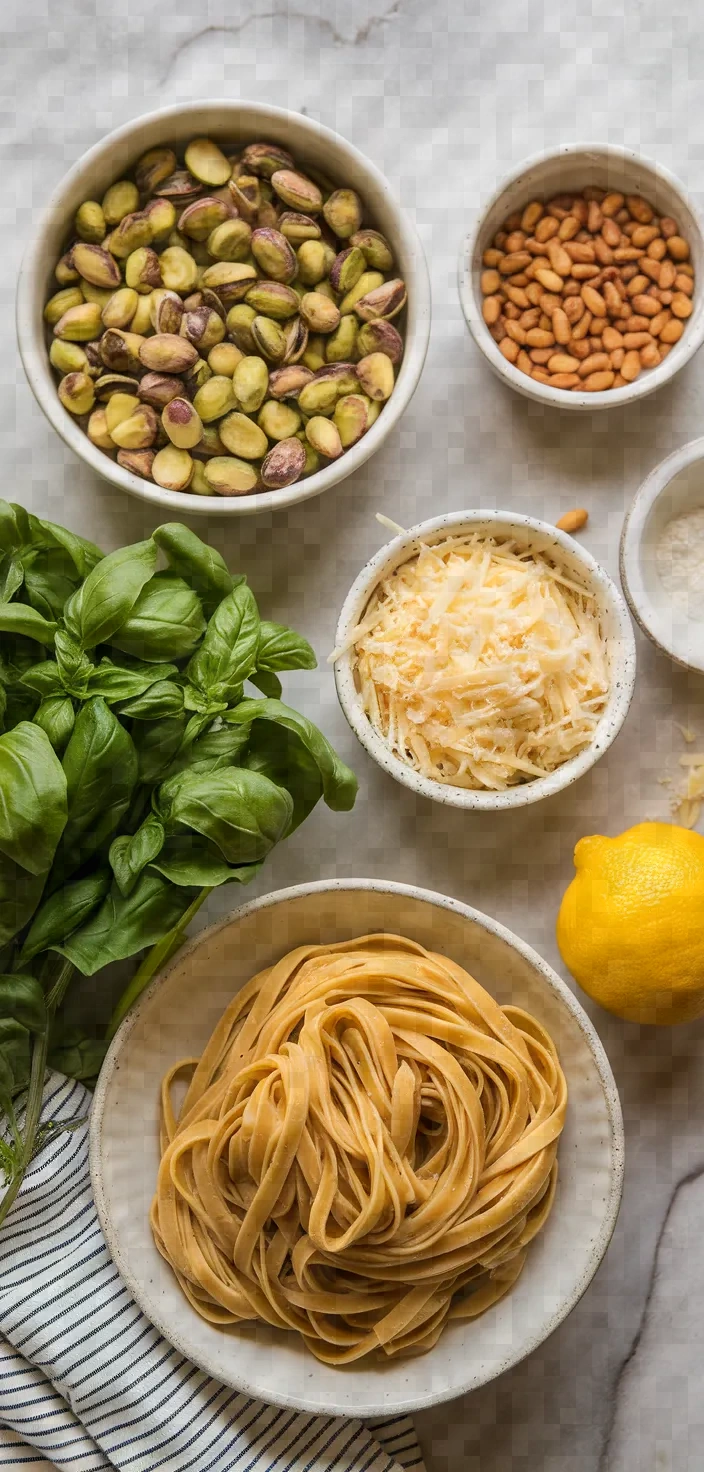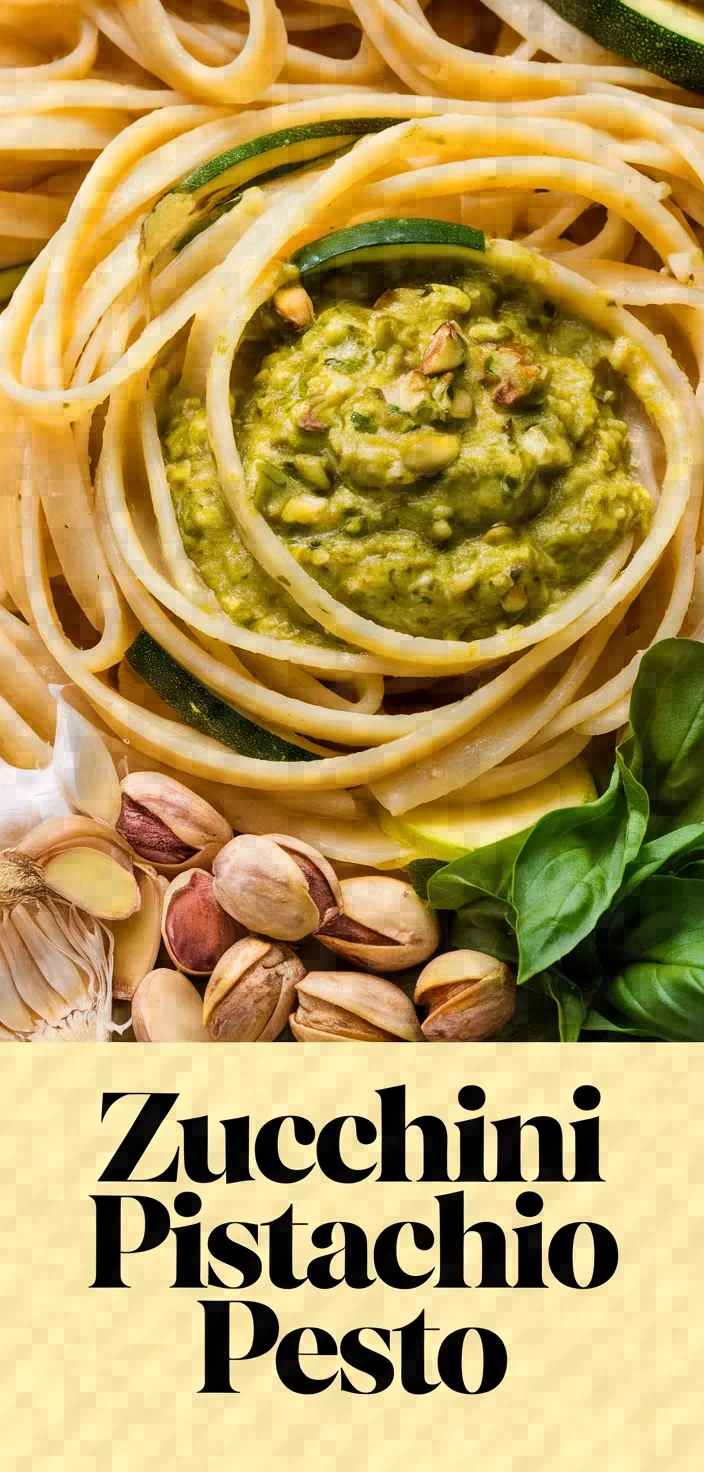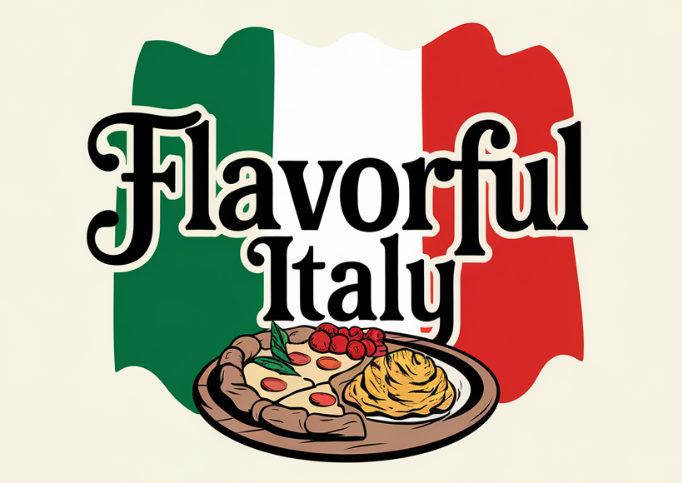Alright, let’s dive into one of my all-time favorite go-to dishes that’s as vibrant as it is delicious: a zucchini pistachio pesto pasta, bursting with fresh basil and zesty lemon. Trust me, this is the kind of meal that will have your taste buds doing a happy dance!

I love making a rainbow-hued noodle dish that features zucchini and pistachios. Nutritionally, it couldn’t be better.
The creamy pesto, bright with fresh basil and a squeeze of lemon, is paired with al dente pasta. You’re tasting the exquisite flavor of a dish that’s deep with Parmesan and garlic.
Every bite is rich, vibrant, and satisfying.
Pasta With Zucchini Pistachio Pesto Recipe Ingredients

- Zucchinis: Low-calorie, high-fiber, vitamin-rich summer squash.
- Pistachios: Protein-packed nuts with healthy fats and antioxidants.
- Basil Leaves: Fragrant herb, rich in vitamin K and antioxidants.
- Parmesan Cheese: Adds savory, umami flavor; calcium and protein source.
- Garlic: Boosts flavor, supports immune health; contains beneficial compounds.
- Olive Oil: Heart-healthy fats, adds a silky texture, rich in antioxidants.
- Lemon Juice: Adds freshness, vitamin C; enhances flavors and balances richness.
Pasta With Zucchini Pistachio Pesto Recipe Ingredient Quantities
- 12 oz (340g) pasta of your choice
- 2 medium zucchinis, roughly chopped
- 1 cup (150g) unsalted pistachios, shelled
- 1 cup (20g) fresh basil leaves
- 1/2 cup (50g) grated Parmesan cheese
- 3 cloves garlic
- 1/2 cup (120ml) extra-virgin olive oil
- Juice of 1 lemon
- Salt and freshly ground black pepper, to taste
- 1/4 cup (40g) pine nuts, toasted (optional)
How to Make this Pasta With Zucchini Pistachio Pesto Recipe
1. Fill a big pot with water and salt it well. Bring to a boil. Add the pasta and cook according to the package directions until “to the bite.” Drain, saving a cup of the water the pasta swam in.
2. Using a food processor, blend together the zucchinis (chopped roughly), the pistachios, the fresh basil leaves, the Parmesan cheese, and the garlic cloves. You should have a mixture that is at least somewhat uniformly combined but still has a fair amount of texture.
3. With the processor running, drizzle in the extra-virgin olive oil, adding it slowly until the mixture results in a creamy and smooth texture. You might need to scrape down the sides once or twice.
4. Juice one lemon and add it to the pesto, along with salt and freshly ground black pepper (to taste). Blend for just a second to incorporate these last additions.
5. Put the cooked pasta back in the pot, over a low flame. Add the zucchini pistachio pesto to the pasta and toss to coat, letting a little bit of the reserved pasta water reach the desired consistency.
6. If you are going to use pine nuts, toast them first. The best way to toast pine nuts (or any nut) is in a small skillet over medium heat. They’ll take about 4 minutes to turn golden brown. A good rule of thumb, or eye, is to stop toasting when the nuts look 3/4 of the way done. They will continue to brown and toast after being removed from the heat. And remember: the only thing that should make a pine nut toasty is the heat from the skillet. Don’t add oil, don’t add butter. If you’re using a recipe that calls for toasted pine nuts, omit the ingredient and use the method here.
7. Immediate service is recommended for the pasta. If you wish to garnish it, do so with toasted pine nuts.
8. Before serving, you may optionally wish to sprinkle additional grated Parmesan cheese on top.
9. To boost the flavor even further, drench the completed plate in a touch of high-quality extra-virgin olive oil.
10. Relish the zucchini pistachio pesto pasta, and revel in its fresh and nutty flavors!
Pasta With Zucchini Pistachio Pesto Recipe Equipment Needed
1. Large pot
2. Food processor
3. Colander
4. Measuring cups and spoons
5. Knife
6. Cutting board
7. Small skillet
8. Spatula or spoon for mixing
9. Citrus juicer (optional)
10. Grater (for Parmesan cheese)
11. Tongs or pasta fork
FAQ
- Can I use a different type of nut instead of pistachios?You can substitute walnuts or almonds for pistachios, but the flavor will differ somewhat.
- Is there a way to make this dish vegan?A vegan version is possible: simply omit the Parmesan cheese and use a non-dairy alternative, if you like.
- How do I store leftover pesto?Keep any excess pesto in an airtight container in the fridge, where it will stay fresh for up to 5 days. You can also freeze it for up to 3 months.
- Can I use dried basil instead of fresh?Fresh basil is suggested for its strong flavor, but you can use dried basil in a pinch. If doing so, adjust the quantity to suit your taste.
- What type of pasta works best with this pesto?Any type of pasta can be used, but shorter pastas such as penne or fusilli catch the sauce beautifully.
- Should the zucchinis be cooked before adding them to the pesto?The zucchinis are not cooked; they are used raw to achieve a fresh, crisp flavor in the pesto.
- Is there an alternative to using olive oil?Although you can use avocado oil or another oil with a mild flavor, the oil that is preferred for both its taste and health benefits is extra-virgin olive oil.
Pasta With Zucchini Pistachio Pesto Recipe Substitutions and Variations
Pasta: Swap out for whole wheat pasta or gluten-free pasta for a more healthful or gluten-free option.
Basil leaves: If you want, you can use fresh spinach or arugula. They may alter the flavor of your dish, but it’s nothing you won’t be able to handle.
Pecorino Romano or nutritional yeast can be used as a vegan standby. If you want an Italian alternative to Parmesan cheese, try these two staples.
Avocado oil: Use this oil in place of extra-virgin olive oil if you want to try a different flavor while still reaping the health benefits.
Walnuts or almonds: Nutty taste that is different from melon seeds. Also, nutty taste and texture could be achieved with sunflowers, pepitas, or other seeds; any of these are nice substitutes in pesto. But if you want to stick with nuts and still keep it on the milder side, go with hazelnuts. Not a huge difference from the original, and they blend well.
Pro Tips
1. Pasta Water Perfection: Be sure to heavily salt the pasta water. This is your first chance to season the pasta and lay the foundation for flavors, as the reserved pasta water will help emulsify the pesto and coat the pasta with a rich, delicious sauce.
2. Pesto Consistency Control: When processing the pesto, aim for a balance between texture and smoothness. The pistachios should be finely chopped, but not completely pulverized, allowing the pesto to have a pleasant, nutty bite.
3. Zest for Zing: Along with the lemon juice, consider adding a little grated lemon zest to the pesto. This will enhance the lemony brightness without increasing acidity, giving the dish an extra layer of fresh flavor.
4. Low and Slow: When combining the pesto with the pasta, do it over low heat. This gently warms the pesto without cooking it, preserving the fresh taste of basil and zucchini while ensuring the pasta is evenly coated.
5. Herb Highlight: For an additional burst of flavor and color, garnish the finished dish with a few whole or sliced fresh basil leaves. This reinforces the basil essence in the pesto and adds a lovely, aromatic finish.

Pasta With Zucchini Pistachio Pesto Recipe
My favorite Pasta With Zucchini Pistachio Pesto Recipe
Equipment Needed:
1. Large pot
2. Food processor
3. Colander
4. Measuring cups and spoons
5. Knife
6. Cutting board
7. Small skillet
8. Spatula or spoon for mixing
9. Citrus juicer (optional)
10. Grater (for Parmesan cheese)
11. Tongs or pasta fork
Ingredients:
- 12 oz (340g) pasta of your choice
- 2 medium zucchinis, roughly chopped
- 1 cup (150g) unsalted pistachios, shelled
- 1 cup (20g) fresh basil leaves
- 1/2 cup (50g) grated Parmesan cheese
- 3 cloves garlic
- 1/2 cup (120ml) extra-virgin olive oil
- Juice of 1 lemon
- Salt and freshly ground black pepper, to taste
- 1/4 cup (40g) pine nuts, toasted (optional)
Instructions:
1. Fill a big pot with water and salt it well. Bring to a boil. Add the pasta and cook according to the package directions until “to the bite.” Drain, saving a cup of the water the pasta swam in.
2. Using a food processor, blend together the zucchinis (chopped roughly), the pistachios, the fresh basil leaves, the Parmesan cheese, and the garlic cloves. You should have a mixture that is at least somewhat uniformly combined but still has a fair amount of texture.
3. With the processor running, drizzle in the extra-virgin olive oil, adding it slowly until the mixture results in a creamy and smooth texture. You might need to scrape down the sides once or twice.
4. Juice one lemon and add it to the pesto, along with salt and freshly ground black pepper (to taste). Blend for just a second to incorporate these last additions.
5. Put the cooked pasta back in the pot, over a low flame. Add the zucchini pistachio pesto to the pasta and toss to coat, letting a little bit of the reserved pasta water reach the desired consistency.
6. If you are going to use pine nuts, toast them first. The best way to toast pine nuts (or any nut) is in a small skillet over medium heat. They’ll take about 4 minutes to turn golden brown. A good rule of thumb, or eye, is to stop toasting when the nuts look 3/4 of the way done. They will continue to brown and toast after being removed from the heat. And remember: the only thing that should make a pine nut toasty is the heat from the skillet. Don’t add oil, don’t add butter. If you’re using a recipe that calls for toasted pine nuts, omit the ingredient and use the method here.
7. Immediate service is recommended for the pasta. If you wish to garnish it, do so with toasted pine nuts.
8. Before serving, you may optionally wish to sprinkle additional grated Parmesan cheese on top.
9. To boost the flavor even further, drench the completed plate in a touch of high-quality extra-virgin olive oil.
10. Relish the zucchini pistachio pesto pasta, and revel in its fresh and nutty flavors!
